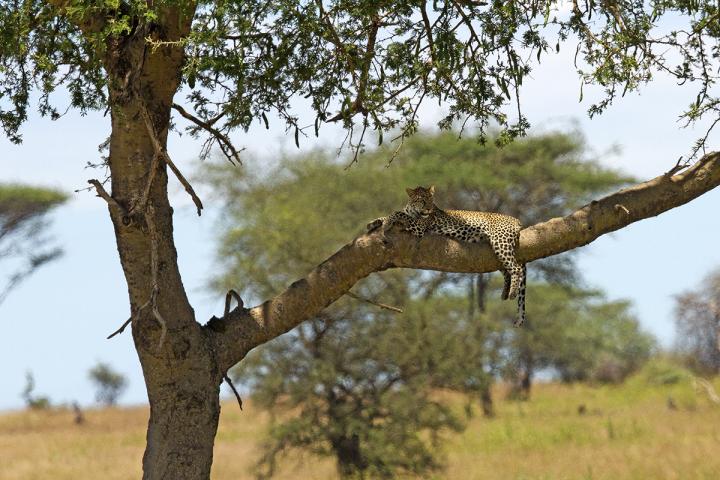Camera-trap study yields insights into what drives leopard population density

Credit: Photo by Michael Jeffords and Sue Post.* See Editor’s note at the bottom of the release.
CHAMPAIGN, Ill. — A study of camera-trap data from Serengeti National Park in Tanzania found that leopard population densities in the 3.7-million-acre park are similar to those in other protected areas but vary between wet and dry seasons. The fluctuations appear to be driven by the abundance of prey and how this affects interactions with other large carnivores like lions, researchers report.
Despite the long history of wildlife research in the Serengeti, this is the first peer-reviewed study of leopard densities in the park, said Max Allen, a carnivore ecologist with the Illinois Natural History Survey at the University of Illinois, Urbana Champaign who led the research. Allen and his team analyzed data from Snapshot Serengeti, a large collaborative effort that uses hundreds of camera traps to collect data on large cats and other wildlife in the Serengeti. The team published the new findings in the journal Biodiversity and Conservation.
“In the wet season, when potential prey species like Thomson’s gazelle and impala are available in abundance, leopards appear at higher densities,” Allen said. “In the dry season, leopards seem to work harder to avoid other large carnivores that compete with them for less abundant food.”
The team used advanced analytical techniques called Bayesian statistics to estimate leopard densities for each camera-trap site and for the study area overall.
“We found 5.72 and 5.41 leopards per 100-square-kilometers in the wet and dry seasons, respectively,” Allen said. “These densities suggest the leopard populations are at moderately healthy levels in the Serengeti. This reflects the importance of large conservation areas for large carnivores, as leopard populations are generally declining across their range.”
The results also highlight the importance of citizen-scientist projects for the conservation of wild species, Allen said. Snapshot Africa is one of the most effective citizen science projects in the world, he said.
“Large carnivores at the top of the food chain play important roles in ecosystem regulation, and disease and population control,” Allen said. “The human-induced changes to habitat availability and quality are accelerating the decline of large carnivores, which are already vulnerable because they have naturally low population densities at birth.”
Understanding how carnivore populations are faring and what factors contribute to their success is essential to conserving them and the other wildlife in their ecosystem, Allen said. Capturing data about their habits through unobtrusive camera traps can lead to better management of the wild areas on which they depend.
###
The INHS is a division of the Prairie Research Institute at the U. of I. The INHS, U. of I. and Slovenian Research Agency supported this research.
Editor’s notes:
To reach Max Allen, email [email protected].
The paper “Counting cats for conservation: Seasonal estimates of leopard density and drivers of distribution in the Serengeti” is available online and from the U. of I. News Bureau
With this study, Allen and his colleagues contributed to an international effort called Snapshot Safari that recruits scientists and citizen-scientists to use camera-trap data from sites across Africa to identify species and population trends and make their findings freely available to the public. The aim is to promote wildlife conservation in Africa.
*Michael Jeffords and Susan Post are wildlife photographers and research affiliates of the Illinois Natural History Survey at the Prairie Research Institute of the U. of I. Their photographs are available here.
Media Contact
Diana Yates, Life Sciences Editor, U. of I. News Bureau
[email protected]
Original Source
https:/
Related Journal Article
http://dx.




